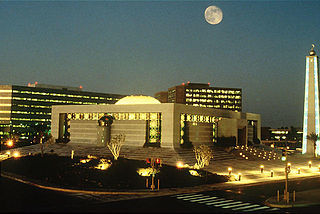
Saudi Arabia, the world’s largest crude exporter, raised the price formula for shipments of its benchmark grade to Asia for April to the highest since October, while lowering prices for all cargoes to the US.
State-owned Saudi Arabian Oil Co. set the official selling price for Arab Light crude shipments to Asia at a 75 cent- discount to the regional benchmark, the company said in an e- mailed statement.
That’s more expensive, by 25 cents, than March shipments. The decision is the reverse of that predicted by local traders and refiners: six surveyed had expected the exports to be made cheaper, by 50 cents.
The differential on Arab Light to Asia hasn’t been higher since October, when it was set at a premium of 10 cents.
The company cut differentials for all four of the grades it sells to the US, lowering Arab Light, Arab Medium and Arab Heavy by 20 cents each.
Prices for the four grades sold to northwest Europe were all increased, by as much as 35 cents for Arab Light. For buyers in the Mediterranean, prices for two grades were lowered and for another two kept unchanged.
Brent crude has slid more than 50 percent since Saudi Arabia led a 2014 decision by the Organization of Petroleum Exporting Countries not to cut output amid a global oversupply in order to defend market share and drive out higher-cost producers. Saudi Arabia and Russia reached a tentative agreement last month to freeze production at January levels provided OPEC and other producers also pledge to halt growth in output. Both Saudi Arabia and Russia pumped at or near record levels in January.
Markets shouldn’t expect any cuts in Saudi production, Ali al-Naimi, the kingdom’s oil minister, said in a speech in Houston last month. Producers with higher costs than those in OPEC need to “lower costs, borrow cash or liquidate,” Naimi said. “It sounds harsh, and unfortunately it is, but it is the most efficient way to rebalance markets.”
Saudi Arabia pumped an average of 10.1 million barrels a day of crude last year, accounting for more than 10 percent of global supply, according to the International Energy Agency.
The country’s output at 10.2 million barrels a day in January was close to the record 10.48 million barrels a day reached in June, according to the IEA. Russia’s production this year of crude and condensate will probably remain at near-record levels of more than 11 million barrels a day, the IEA said.
Middle Eastern producers are competing increasingly with cargoes from Latin America, North Africa and Russia for buyers in Asia, its largest market. Producers in the Persian Gulf region sell mostly under long-term contracts to refiners. Most of the Gulf’s state oil companies price their crude at a premium or discount to a benchmark. For Asia the benchmark is the average of Oman and Dubai oil grades.
Recommended for you
